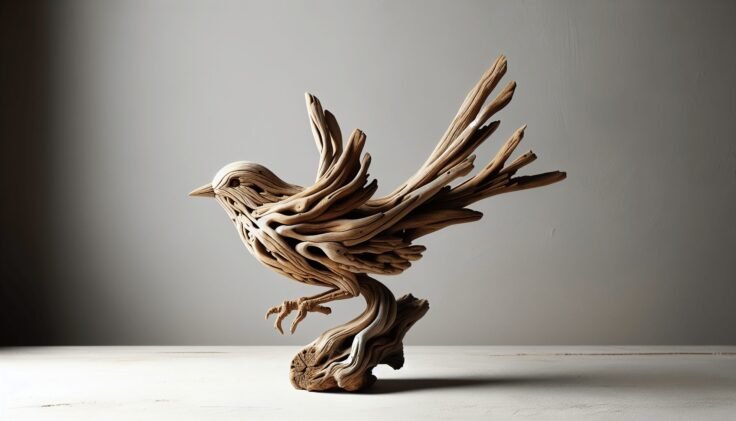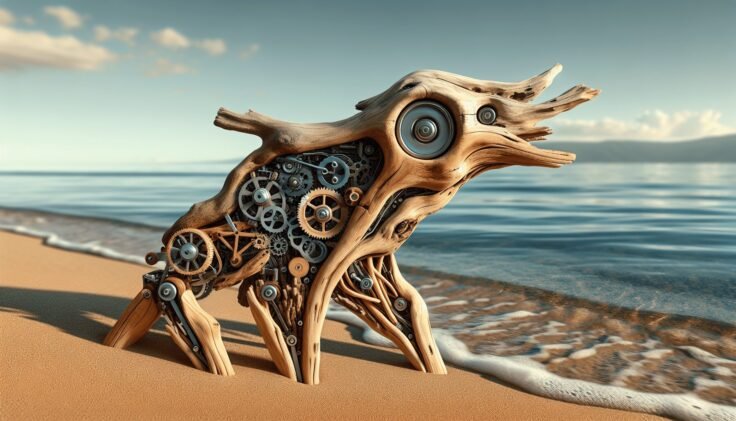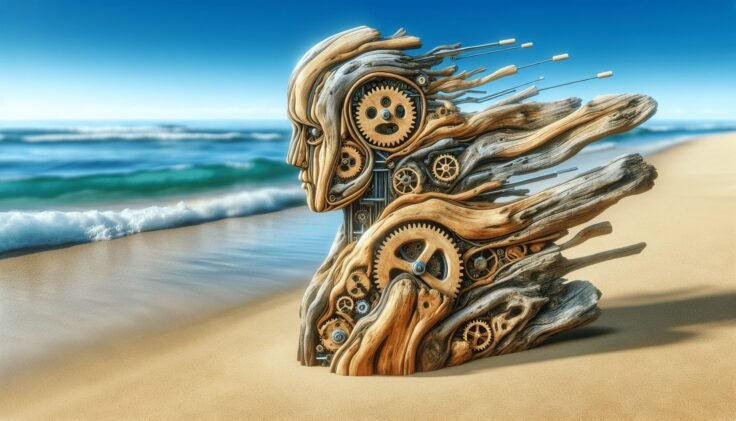Have you ever wondered how something as simple as driftwood can be transformed into stunning pieces of art? Driftwood birds are a perfect example of this creative transformation, where beachcombers and artists alike use weathered wood to craft lifelike bird sculptures. Whether you are new to the world of driftwood art or an aficionado looking to refine your skills, this guide will take you through the fascinating process of creating driftwood birds.

What is Driftwood?
Driftwood refers to wood that has been washed onto the shore of a sea, lake, or river by the action of winds, tides, or waves. It starts as seemingly random pieces of water-logged logs, branches, or planks, but after being weathered by nature, it acquires unique textures, shapes, and colors.
The Journey of Wood and Water
Driftwood begins its journey once trees fall naturally or are harvested and discarded. Over time, pieces of wood break off and wind up in bodies of water. The constant lapping of waves, exposure to sunlight, and possibility of salty ocean water shape and polish the wood, giving it its signature weathered, smooth appearance. This natural aging process is essential, making each piece one-of-a-kind and ready for artistic endeavors.
Environmental Significance of Driftwood
Driftwood does more than inspire artists. It plays crucial roles in coastal ecosystems. Driftwood offers shelter for birds, crustaceans, and many other small creatures. It also acts as a stabilizer, helping to lower erosion levels by trapping and stabilizing sand and sediments. Thus, using driftwood in your art helps to raise awareness about these beautiful ecosystems.
The Art of Turning Driftwood into Birds
Transforming driftwood into birds is an art that combines creativity, patience, and a keen eye for detail. The nuanced lines and natural curves of the driftwood pieces can help mimic the shapes and forms often seen in bird anatomy.
The Basics of Driftwood Sculpting
To craft a driftwood bird, start by understanding the essence of what you’re creating. Bird sculptures often need to reflect balance and symmetry. Practicing drawings of birds can serve as helpful templates and guides when laying out your final design.
Gathering and Selecting Driftwood
Collecting driftwood requires a keen eye for promising pieces that could contribute to the form of a bird. Typically, branches can be used for wings, smaller twigs can make excellent legs, and larger pieces can form the body. Select wood that is light yet sturdy enough to anchor your design.
Cleaning and Preparing Driftwood
Before you begin to assemble pieces into a bird sculpture, cleaning the driftwood is a crucial step. This usually involves soaking the wood in water mixed with a mild bleach solution, scrubbing off any algae or debris, and letting it dry thoroughly.
Tools and Materials You’ll Need
Creating driftwood birds requires some basic tools and materials. While the artistic spirit cannot be bottled, gathered resources and tools will help you capture it.
| Tool or Material | Purpose |
|---|---|
| Hot Glue Gun or Epoxy | For securely attaching pieces of driftwood together |
| Small Saw/Pruners | Useful for cutting and shaping driftwood |
| Sandpaper | To smooth rough edges and surfaces |
| Varnish or Sealant | To protect and reinforce your finished sculpture |
| Paint and Brushes (Optional) | For adding colors or decorations to your driftwood bird |
Techniques and Tips for Crafting Driftwood Birds
Crafting driftwood birds involves recognizing the natural beauty of the wood’s grain and texture. Here are a few techniques to help you get started:
- Look for Natural Shapes: The curves and lines in driftwood offer an organic template for appendages like bird wings or tails. Avoid straight cuts where possible to maintain the natural aesthetics.
- Plan the Structure: Stabilize your bird by ensuring that the body is sturdy and proportionate, which may entail balancing its weight evenly.
- Experiment with Textures: Allow the wood’s natural grain to shine but don’t hesitate to accentuate different textures using sandpaper or a small blade.
Types of Driftwood Birds You Can Create
Creating driftwood birds can be as simple or as intricate as you choose. Explore different types of birds to understand their varied forms and characteristics, which will enrich and diversify your sculptures.
Shorebirds
These are usually small to medium-sized birds such as gulls or sandpipers, which are found along coasts. Their slender bodies and elongated necks can be elegantly represented using long, thin pieces of driftwood.
Raptors
Birds of prey like eagles and hawks are characterized by their robust bodies and pronounced talons. Driftwood with a strong form or thick nature can be used to represent these commanding figures.
Songbirds
Ideal for smaller projects, driftwood songbirds require delicate attention to balance and form. You will use smaller pieces of driftwood to emulate their cheerful presence.
Adding Finishing Touches to Your Driftwood Birds
After piecing together your bird sculpture, acknowledge the final touches in your work. The objective is to enhance both the natural beauty of the driftwood and the realism of the bird.
Painting and Decorating
Some artists prefer adding a layer of paint to their bird sculptures to resemble real-life counterparts, while others might choose vibrant, imaginative colors. If you choose to paint, consider the hues and shades that resonate best with your artistic vision.
Preserving Your Sculpture
Using a good-quality wood varnish or sealant will help protect your sculpture from wear and tear, especially if you plan to keep it in a humid or high-traffic area. This finishing touch ensures longevity, maintaining your driftwood bird’s charm over time.

Where to Display Driftwood Birds
Driftwood birds are excellent versatile decor choices that enhance any setting. Here are a few ideas for displaying your creations:
Home Decor
Your living space or personal sanctuary can benefit from the rustic, natural charm of driftwood bird sculptures. Consider placing them atop a mantelpiece, within bookshelves, or creating a centerpiece.
Garden Art
Introduce driftwood birds into your garden arrangement for an artistic touch. These sculptures can be stationed amongst plants, perched on rocks, or situated near water elements for an interesting landscape view.
Art Galleries and Exhibitions
Sharing your artwork in galleries or local exhibitions not only raises awareness of driftwood art but can garner appreciation and potential clientele interested in your unique skills.
The Joy of Creating Driftwood Birds
Engaging in the practice of creating driftwood birds can be an absorbing and fulfilling process. Not only does it allow you to experiment with form and texture, but it also connects you to nature and promotes sustainable artistic practices.
Lifelong Learning and Creativity
Each piece of driftwood you come across tells a story, offering an opportunity for continuous learning and growth. As you hone your skills, you’ll find that every experience adds to your creativity and understanding of the art form.
Eco-Friendly Artistry
By using naturally sourced materials that undergo minimal processing, your driftwood bird crafts contribute to eco-friendly artistic endeavors. This responsible approach lessens the footprint on natural environments and fosters a greater appreciation for the beauty and bounty of nature.
In conclusion, driftwood birds provide a bridge between creative expression and environmental consciousness. Engaging with this art form brings every participant closer to the serene beauty and untold stories found along shores and riversides, fostering a passion for both art and nature.















